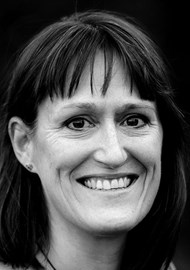I was interested to read this book which aims to cover the basics required for school based audiologists (or ‘educational audiologists’ as they are also known) working in the USA, as I had limited knowledge of this role. The role should not be confused with the UK’s use of the term ‘educational audiologist’ which tends to be used for a qualified teacher of the deaf who specialises / gains further training in audiology.
The book is divided into five sections starting with basic knowledge such as classroom acoustics and the foundation skills needed for school success, then outlining what the typical school-based audiologist should be doing from a practical viewpoint, followed by more specialist chapters to include working in schools for the deaf, with children with cochlear implants and auditory processing disorders. The chapters are separated by vignettes from practising school based audiologists, which give individual insights into the realities of working in such a role in the USA.
So what did I learn and what was different from UK practice? Hearing screening at school occurs on six occasions and also aims to identify children with temporary conductive losses. The role is meant to include raising awareness of noise induced hearing loss within the whole school population, although the consistency of this seems to vary greatly.
I found the chapter on ‘School-aged language and classroom success’ particularly interesting, highlighting the skills children need in areas such as phonological awareness, syntax and morphology; the typical deficits children with hearing impairment have in these areas, and how / why these are typically less developed in the hearing impaired child.
It not only highlights why it is so important to identify hearing loss as early as possible, and enable access to language and communication, typically through the use of accurately fitted hearing aids, but also the limitations of hearing aids which do not give access to the level of incidental learning that is typically required, nor ‘correct’ distortion caused by a damaged cochlea.
The text is aimed at AuD students. I found it easy to read and not at all intellectually demanding. If considering a role as a school based audiologist in the USA I would buy a copy of this book. Although at quite a basic level, it has numerous references and lists of online resources and information from which to further develop the knowledge and skills needed for this role, and goes through the various legislation outlining what education and support children with hearing impairment are entitled to. In my current role as an NHS based audiologist I may occasionally use it for reference but would not consider buying a personal copy nor recommending it is bought for departmental use. It may be of interest to UK educational audiologists and teachers of the deaf, but I would suggest accessing a library copy to evaluate it first.





